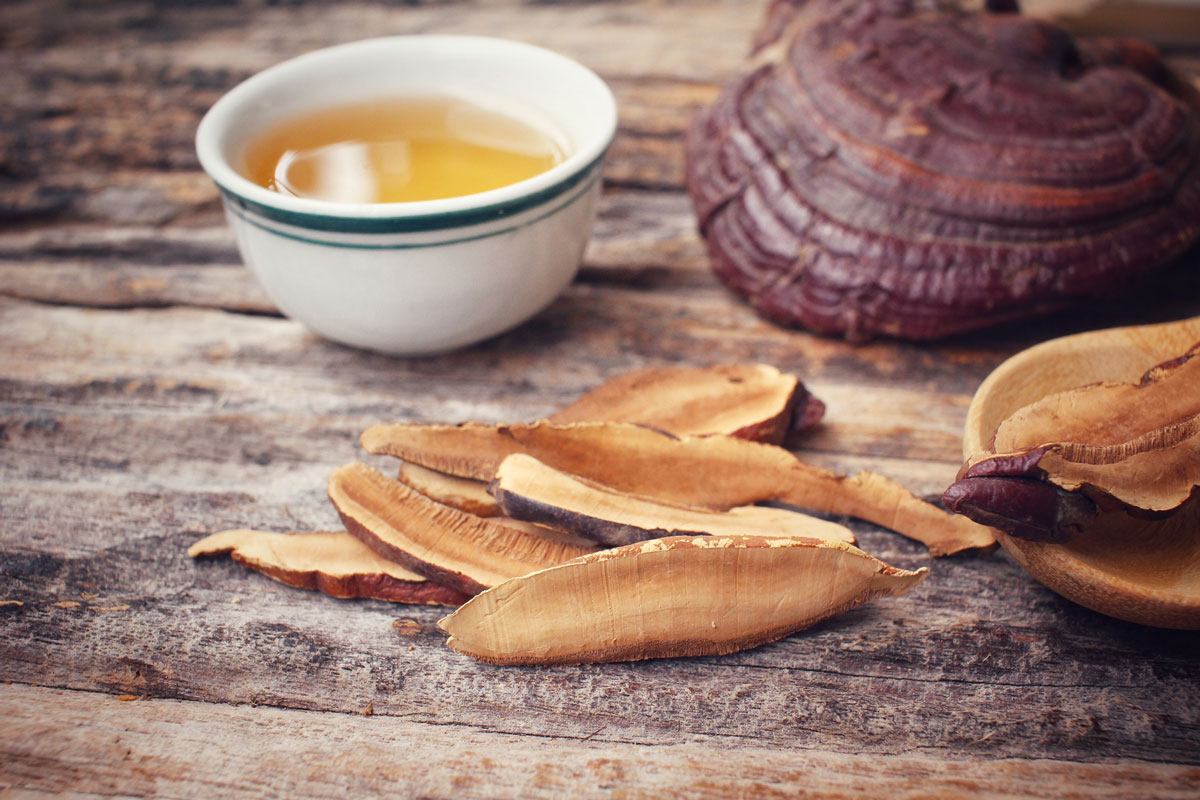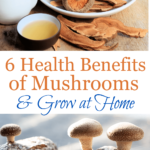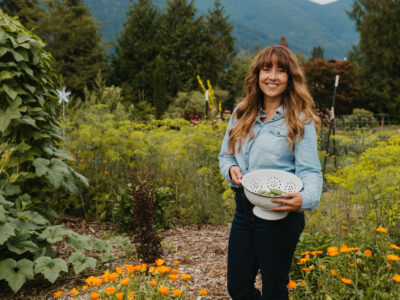The health benefits of mushrooms are vast, and when you consider that you can easily grow mushrooms at home, it gets even more exciting. Ever since I found healing from stomach acid and ulcers by changing the food I ate, I've continued down the rabbit hole of using our food and herbs as medicine.
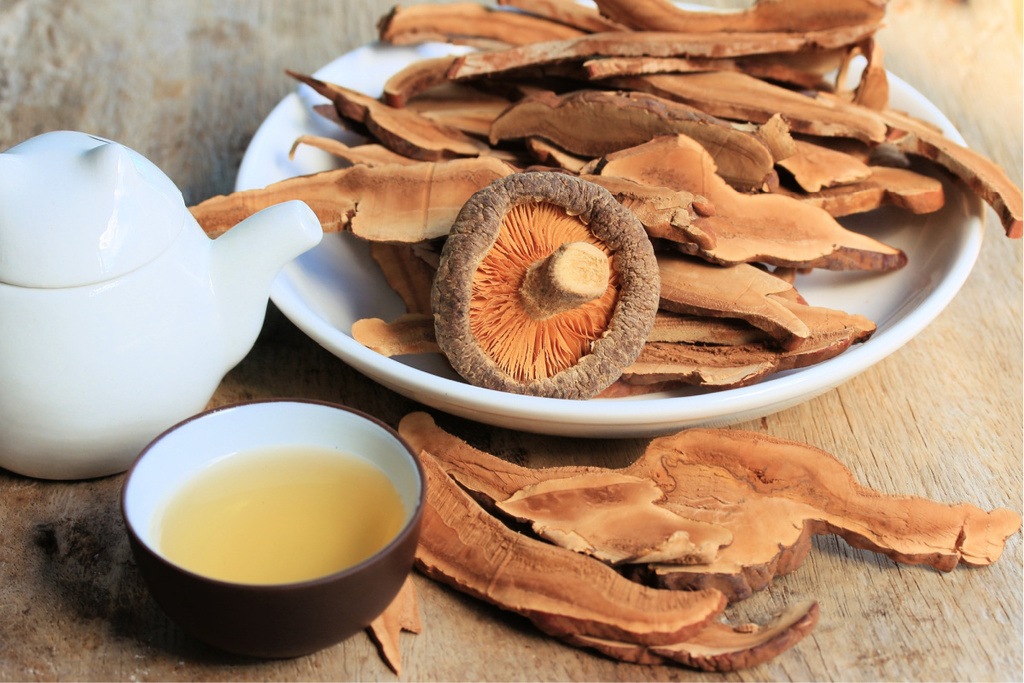
This post contains two podcast episodes. Episode #422, “The Power of Medicinal Mushrooms” with Dr. Christopher Hobbs and episode #269, “Health Benefits of Mushrooms You Need to Know,” with Mary Ellen Kozad, co-founder of Field and Forest Products.
Since the information from those two podcasts is similar, you can find everything discussed in both podcast episodes below.
About Mary Ellen Kozak
Mary Ellen Kozak co-founded Field and Forest Products in 1983 with her future spouse and business partner, Joe Krawczyk. She has combined her profession in mycology with her academic background in agronomy, integrating a longtime passion for plant-based food systems with fungi.
Mary has been on previous episodes of the Pioneering Today Podcast where we discussed how to grow mushrooms at home and where to forage for morel mushrooms, while the focus in this podcast episode is on the benefits to be found from consuming and using mushrooms.

About Dr. Christopher Hobbs
Dr. Christopher Hobbs is a fourth-generation, internationally renowned herbalist, licensed acupuncturist, author, clinician, botanist, mycologist, and research scientist with over 35 years of experience with herbal medicine.
Christopher has a doctorate from UC Berkeley in phylogenetics (which is the study of evolutionary relationships among biological entities), evolutionary biology and phytochemistry (which is the study of phytochemicals, which are chemicals derived from plants). He is also a founding member of the American Herbalist Guild.
Health Benefits of Mushrooms
Chris mentions that most people around the world, throughout various cultures, eat mushrooms frequently, if not daily. He mentions that mushrooms are a very high source of plant protein and can rival meat when meat isn't available.
Certain mushroom species (namely oyster) have upwards of 30% protein. This protein is very absorbable and has the full complement of amino acids that we need.
Beyond the protein, mushrooms have trace minerals, phosphorus, potassium, zinc, copper, magnesium and B vitamins. They're also a fantastic source of digestible and indigestible fiber. (Source)
It's important to note that I am not a certified medical practitioner. This post is not intended to diagnose or treat but is for informational purposes only. Please contact your healthcare professional before introducing new herbal and natural remedies into your wellness routine.
Gut Microbiome & Mushrooms
There is so much emerging research on our microbiome and how a diverse microbiome is so important for good health.
The gut microflora produces about 70-80% of our serotonin (the happy hormone). (Source) Serotonin regulates our blood supply, sex drive, sleep, mood, etc.
The importance of prebiotic fiber in our diet is often overlooked, but it's crucial for our gut health. (Source) Much of the fiber found in food today is digested in the stomach long before it gets to our gut. We need to consume prebiotic fiber that will make its way through our digestive tract to feed the good bacteria in our gut.
Dr. Hobbs says the number one source of prebiotic fiber is mushrooms! (Source)
Mushrooms that Help Boost Your Immune System
When looking to use mushrooms to help boost your immune system, focus on Shiitake, Lion's Mane, Reishi, Turkey Tail, Maitake, and Chicken of the Woods. These are all immunomodulatory, which help boost your immune system. (Source)
The Olive Oysterling is being studied for its effects on managing blood sugar levels in diabetics as well as preventative benefits. (Source)
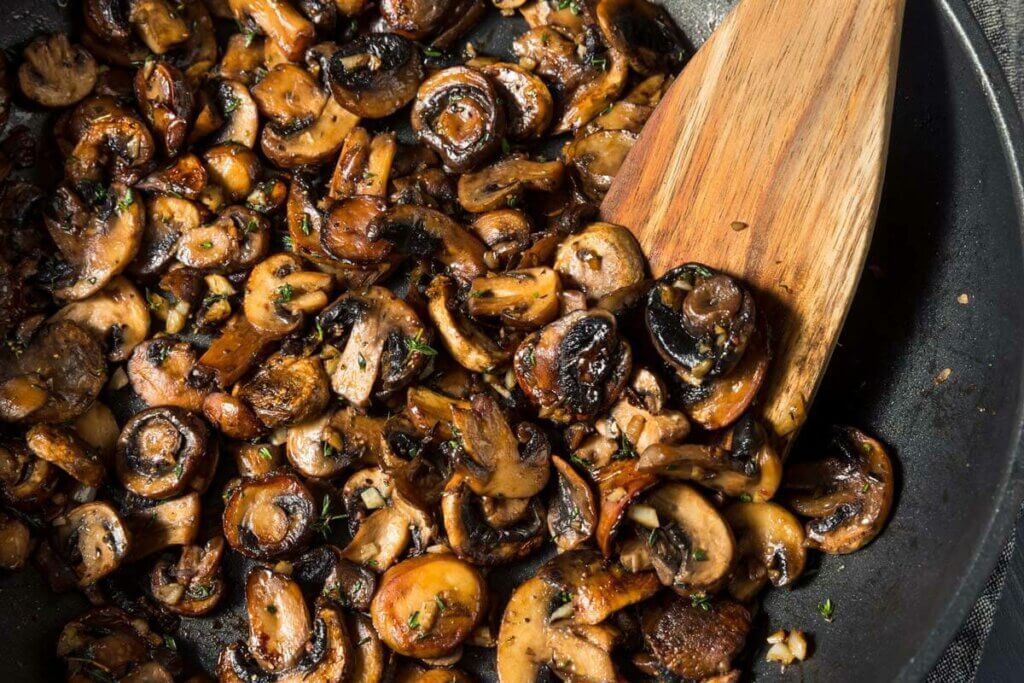
Do Mushrooms Need to Be Cooked?
I wondered if mushrooms needed to be cooked before consuming in order to unlock the medicinal benefits. Dr. Hobbs says they all should be cooked due to the glucans in the cell walls.
Mushrooms contain both beta-glucan (an immunomodulating substance) and chitan (which is the same substance found in crustacean shells). Chitan is a strong substance needed by mushrooms to penetrate the wood and soil they grow on. However, these substances are indigestible for us unless broken down through cooking.
If you don't cook mushrooms until they're tender, you'll likely end up with an upset stomach from all the fiber. The only caveat here is the button mushrooms found at the grocery store. Many people slice those up raw on their salads without issue. It's good to know, however, that you won't be getting much nutrition from those mushrooms.
Furthermore, in order to retain as many nutrients as possible, according to Harvard, the best cooking method is sautéing quickly over high heat or simmering over low heat, such as in soups. (Source)
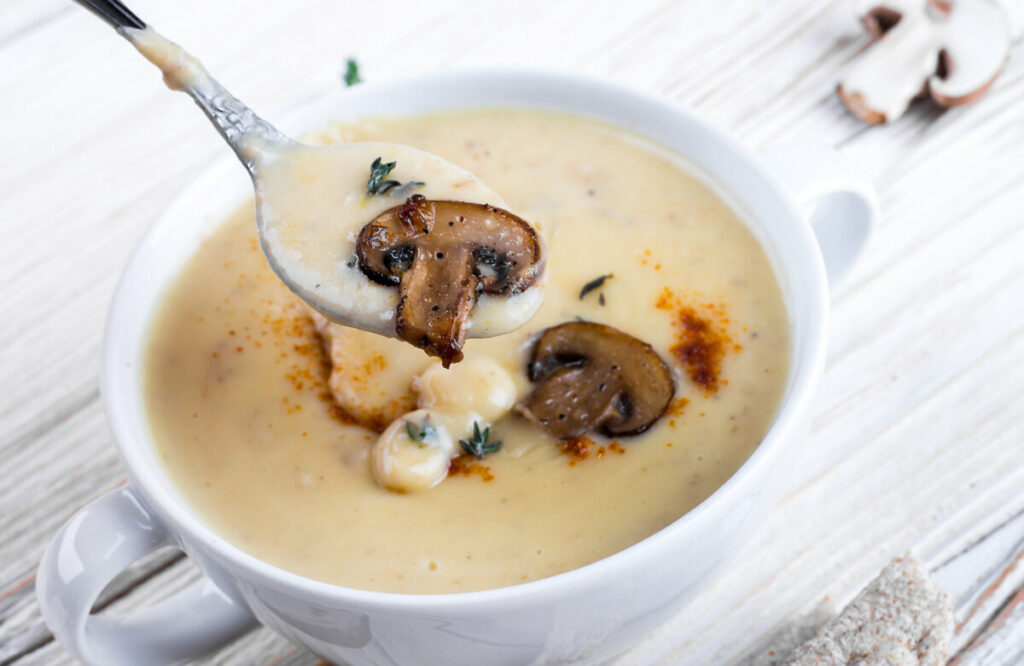
Ways to Consume Mushrooms for Medicinal Benefits
Dr. Hobbs mentioned his time spent in Asia after getting his acupuncture license that in the hospitals, in nearly every dish they were serving mushrooms.
Food
Mushrooms were served in stirfry and soups, and he's eaten them grilled or as a meat replacement for a hamburger, etc. I have a fantastic cream of mushroom soup recipe that would be a great way to get more mushrooms into your diet.
Now mushroom cocoas and mushroom coffees are popping up all over the place. People are really getting on board with the medicinal value mushrooms provide and finding more ways to incorporate this food into their daily lives.
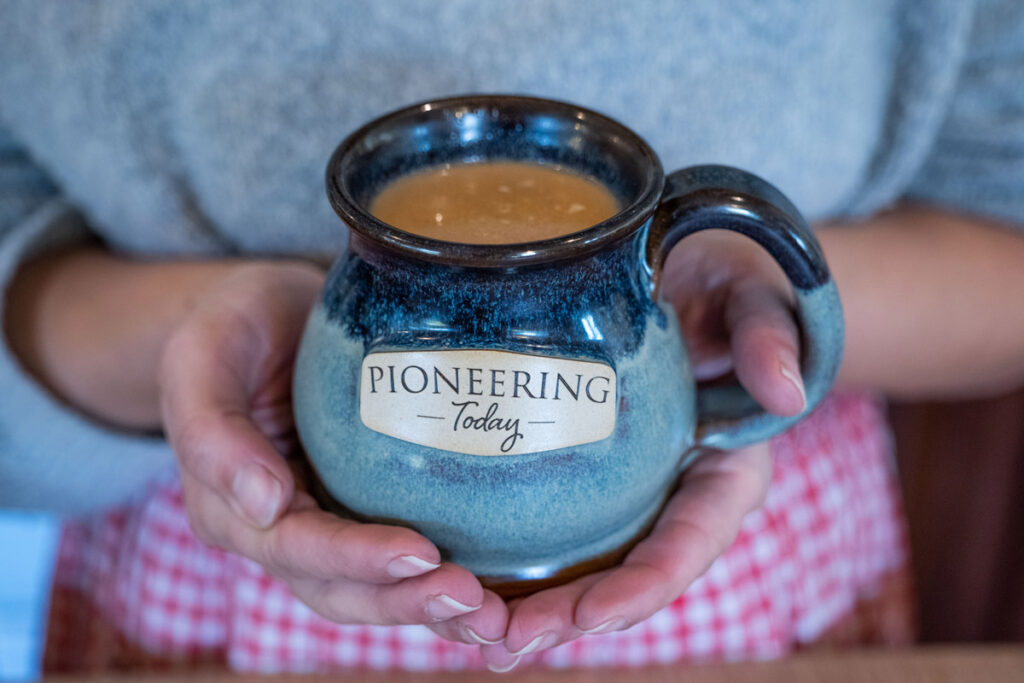
Pills & Powders
There has been such an explosion in mushroom supplements. One thing that is really great when you do grow your own mushrooms is that you can cook and freeze-dry (or dehydrate) those mushrooms and then encapsulate them into your own pills or make your own tea blends.
In the podcast with Mary Ellen, she mentions making a mushroom tincture. However, I now know that mushroom tinctures are ineffective for their medicinal properties because mushrooms contain beta-glucans in their cell walls, which means they aren't soluble in alcohol.
So the medicinal properties of the mushrooms won't be extracted into the tincture. Consuming the whole cooked mushroom is ideal, or turning them into a powder.
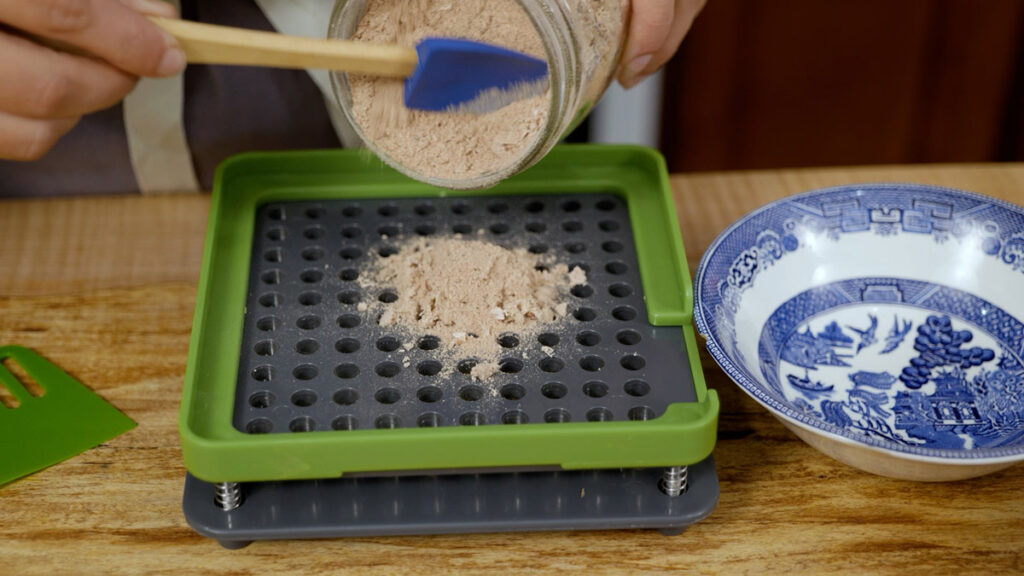
Can You Overconsume Mushrooms?
I asked Dr. Hobbs if we should be concerned at all when it comes to how many or how often we consume mushrooms. He said that since mushrooms are food medicine, there's no danger in overconsuming them.
Typically speaking, when listening to our bodies, we'll know when we've had our fair share. Dr. Hobbs shared an experience where a friend grilled up some mushrooms on the grill, and he consumed 10-15 good-sized mushrooms. The next day, he had a little digestive upset, but that was likely due to the large quantity of fiber.
His best advice is to have a balanced diet.
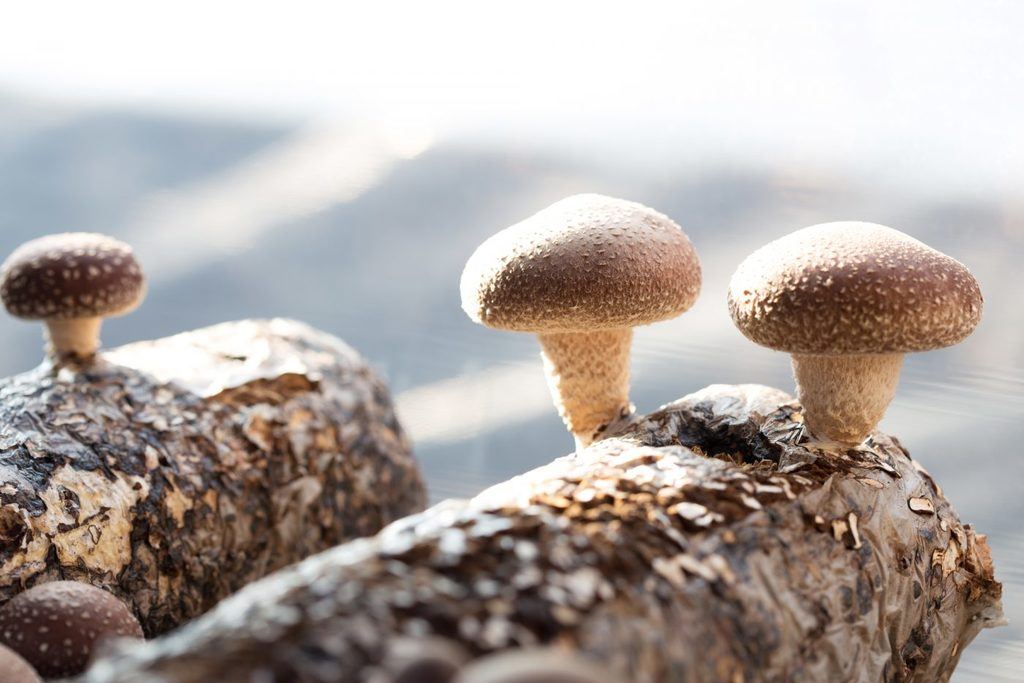
Types of Mushrooms
I asked Dr. Hobbs, if someone wanted to start incorporating mushrooms into their diet for the medicinal benefits, which mushroom should they start with?
Shiitake
Shiitake, besides the nutritional value, you're getting a large amount of prebiotic fiber. They're also widely available and delicious. Behind the button mushrooms (which don't provide any medicinal value), shiitake is the most popular and most available mushroom.
Perhaps the most common medicinal value of shiitake mushrooms is their ability to improve immune function. (Source)
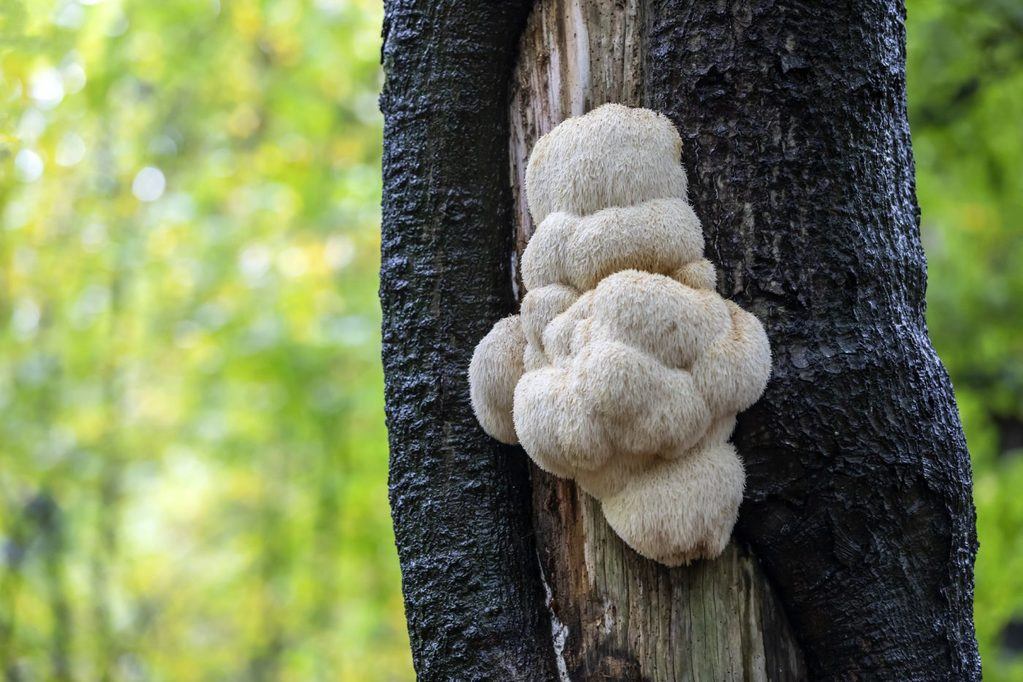
Lion's Mane
It's pretty safe to say that the reason why people are so interested in Lion's Mane right now is that it appears to help with our memory. So I think people are really interested in Lion's Mane for that reason alone. (Source)
I know that there's been some work using it to look at dementia and also Alzheimer's. I think that the Eastern cultures look to Lion's Mane to help with digestive disorders.
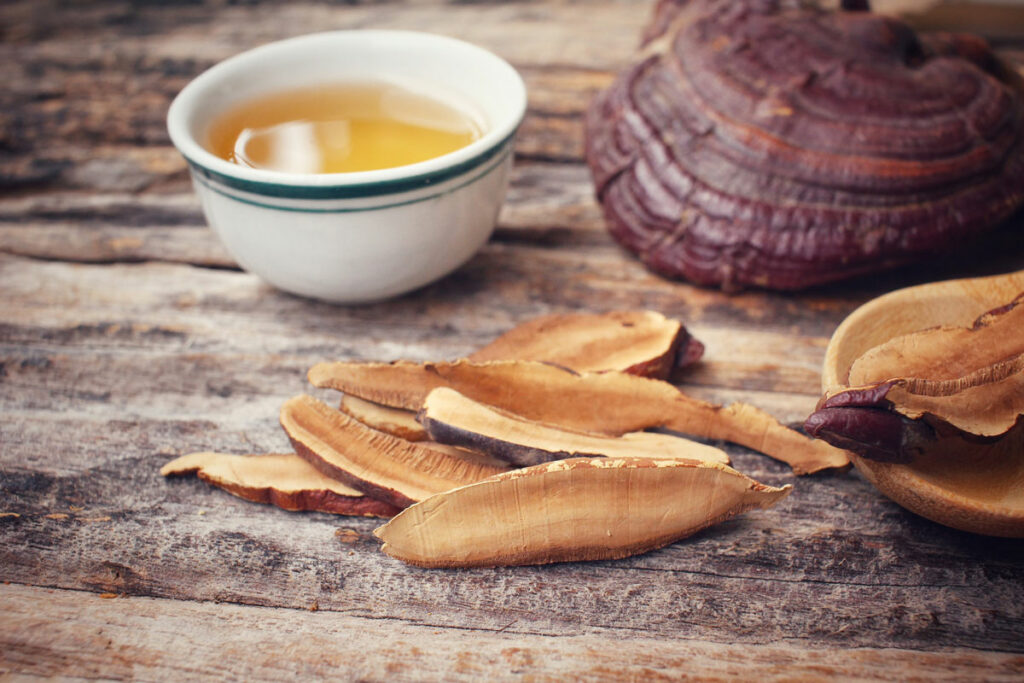
Reishi
Reishi is the second most used mushroom in clinical research (second to Turkey Tail, more on this below). Reishi has been found to have “antioxidant, anti-inflammatory, and immune-boosting effects. Recent research has focused on the potential benefits of G. lucidum in treating metabolic disorders such as diabetes and obesity, as well as its possible role in preventing and treating infections caused by the coronavirus.” (Source)
Mary Ellen likes to use it for tea. She steeps it with a lot of cinnamon sticks and cloves just to get rid of some of that mushroomy bitterness.
The mushroom pieces are able to be used over and over again. Simply freeze either the conch or antler forms of Reishi. You'll get maybe five or six brews out of each piece. It lasts a long time.
Though brewing isn't as “instant” as stirring in mushroom powder into your tea, it is an option for those who don't want to go to the trouble of powdering their own mushrooms.
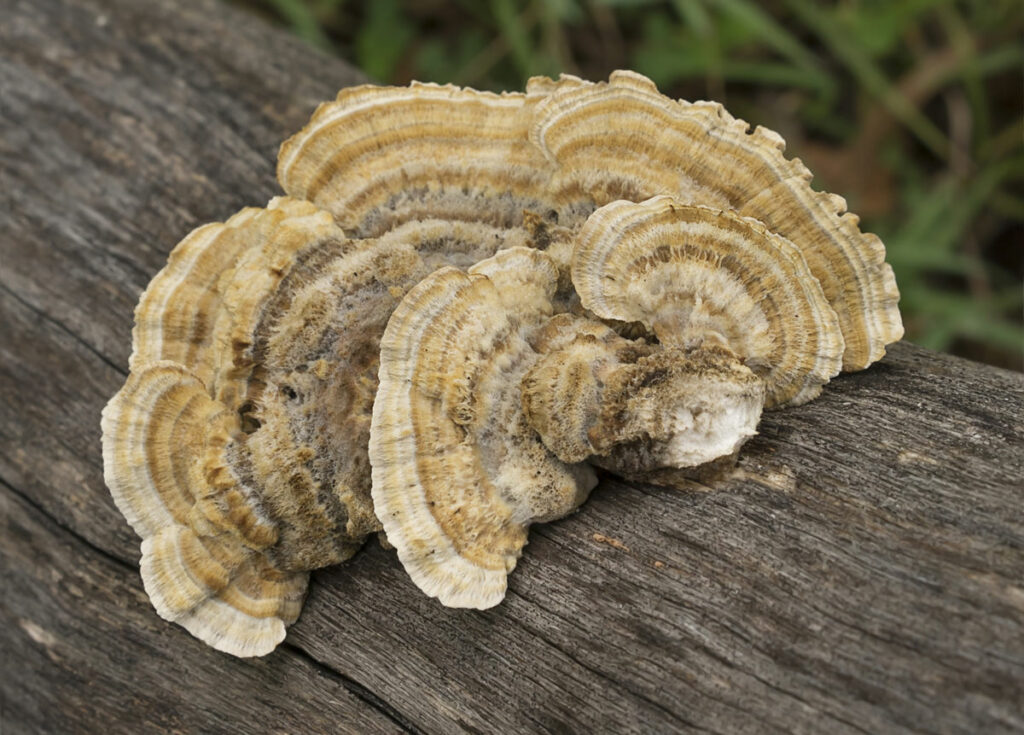
Turkey Tail
Turkey Tail (Coriolus versicolor) mushrooms are most commonly used in clinical studies. They're proven to reduce inflammation, boost immunity response and even fight against cancer. (Source)
I'm excited about Turkey Tail because it's supposed to grow in my area, but I just haven't gone out and foraged for it yet.
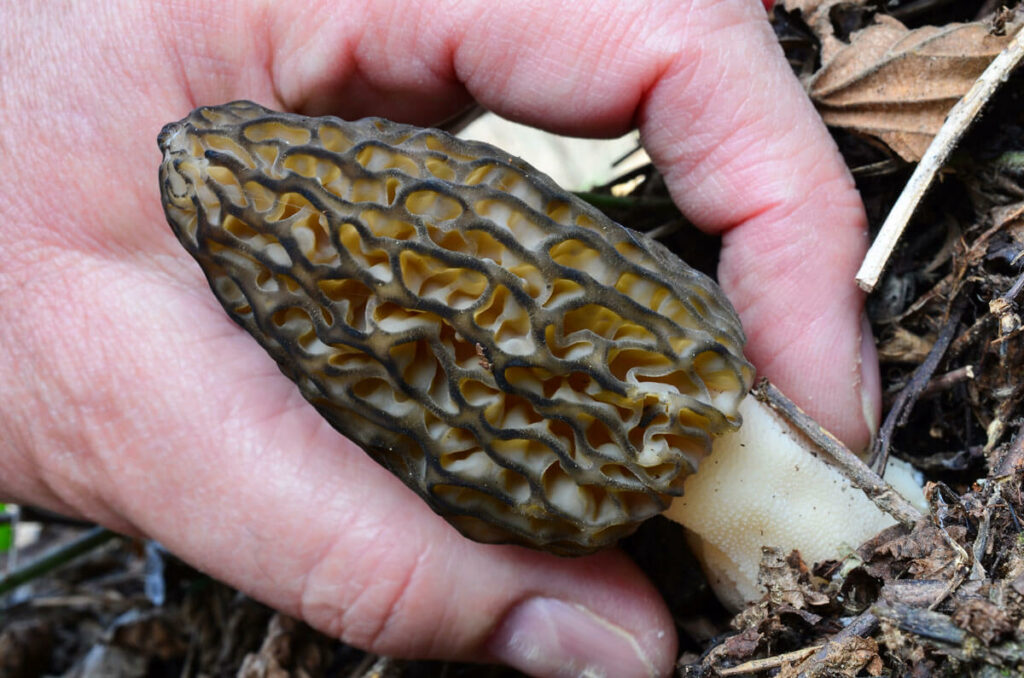
Cautions When Foraging for Mushrooms
Dr. Hobbs mentions we should all take caution when foraging for wild mushrooms. First, to be sure you know what you're harvesting. There are some poisonous mushrooms out there, so if you're not sure, leave it!
Also, when foraging for mushrooms, because mushrooms are metal accumulators, Dr. Hobbs recommends avoiding mushrooms that have grown next to the road or near a factory or agricultural fields that may be sprayed. Use these common foraging rules to keep you safe!
Where to Find Dr. Hobbs
- Website: christopherhobbs.com
- Instagram: @christopherhobbs1
- Facebook: https://www.facebook.com/drchristopherhobbs/
- YouTube: https://www.youtube.com/user/chrisrhobbs/featured
- Books: Medicinal Mushrooms: The Essential Guide
Where to find Mary Ellen
Resources
- Shiitake Mushroom Butter
- Mushroom Stock
- Cream of Shiitake Soup
- Dried Mushrooms
- Planting & Harvesting Timelines
- How to Grow Mushrooms at Home
Melissa: Hey pioneers. Welcome to episode number 422. Today's episode, we are going to be talking about mushrooms, both medicinal properties of mushrooms and what mushrooms offer to our diet and our gut health, which of course is tied to our overall health because so much of our immune system, actually our gut to brain pathways of talking, all of those are actually tied to the gut. So super interesting episode. I have a feeling you're going to learn a lot. I certainly learned a lot about mushrooms, but I also want to say that we can learn things from people who may have different views from us, and that is completely okay. But on the same side, I also feel like it's important to talk a little bit about what will be the elephant in the room perhaps when you listen to this episode.
And this is probably more tailored to my long-term listeners, thank you so much for those of you who've been hanging out with me and let me know things that you want to learn about on the show. I totally appreciate your feedback. But as a homesteader, and therefore most of you who listen into this are interested in homesteading to some degree and talking about the subject of eating meat. So I raised grass fed, grass finished beef for ourselves, and we sell a very, very small amount to the community. We do not ship, like we can't even produce enough for the people who want it locally. So this is not any type of business pitch for our meat. We raise our own poultry, and that includes for eggs, that includes for butchering. We also raise our own pork. So there is a difference between regenerative agriculture, truly pasture raised, not just what is put on a label by large commercial agriculture and their definitions of what pasture raises, especially for chickens, my goodness.
But I feel like oftentimes when we look at studies, there is so much more to a study and what influences the result of that study and not always like nefarious means either, but when you're doing studies, for example, when we see studies where people have done more plant-based versus eating meat, there's so many factors that aren't taken into those studies. One, I highly doubt that the study is being done on meat that is raised with regenerative agriculture practices that is truly grass fed and grass finished, that is raised and harvested on site. So the animal is never stressed in a slaughterhouse situation because you can't buy that, barely. Barely can you buy that at stores. Very few stores actually even carry that type of meat.
And then two, if you were to take somebody who is already eating a very, I don't even know what word to put on this type of diet, but what I would consider a typical homesteader diet where it is the food that is raised with the highest ethical standards, truly pasture raised, free-range, eating as nature intended, grass fed, grass finished when it comes to beef, all of those things, fruits and vegetables that you have largely grown yourself or gotten from a local grower who uses honestly usually above organic practices, especially if it's in your own home and on your own land. You take somebody who's eating that type of diet and you put them in a study alongside someone who is eating more of a typical standard American diet with lots of processed foods, et cetera, and you are going to see drastic changes in somebody who went from a typical standard American diet and is maybe eating as the study diet is. Right. You're going to see, I would assume anyways, you're really going to see a big difference.
Whereas you take someone who's already eating nutrient dense food, raised in all of the manners that we've discussed, you're not going to see as big of an impact. And so I share that, not because I don't think, I'm hopeful that that's not purposely what's being done to sway studies, but just there are so many other circumstances that come into play that impact a study's result that isn't always talked about. So it's kind of funny, the more I learn, I feel like the less you can rely at face value on certain things. And then there's individual, our individual makeup. And there have been times where a keto diet, for example, was exactly what worked for me and what I needed in that moment. But I cannot always say a keto diet is absolutely best because there have been other points in my life where a keto diet was absolutely not the answer for where I was at at my personal health journey and what my body needed, what was sensitive, like all of those things.
So I felt like I needed to share that preface because Dr. Hobbs who's a wonderful information, has a lot that you're going to learn, and I think it's a very valuable episode. I'm excited for you to hear it. But also knowing that I don't come from a place where I think plant-based is the best way to go or the only way to go, but I know if you don't have a quality meat source of the manner that I'm speaking about, then definitely using plants in the way that he's sharing, because it is a more whole based food way of eating, right, definitely has benefits and we all can benefit from the mushrooms as you're going to hear about in today's episode.
I did feel like I needed to just share that with you and kind of have that open conversation about different studies and different things like that. I think when we get to a place where we cannot discuss things, especially have discussions with people who may have different views with us, I think that that's a really dangerous place for us to get in as a society quite honest. And so I think it's healthy for us to listen to different things and to also have the discernment to take away from it what we need to and then grow and move from there. So today's sponsor of today's podcast episode, before we dive into our interview, is American Blossom Linens.
So American Blossom Linens is a fabulous American made sheet company. Not only are the sheets made in the US but they only purchase cotton that is also grown in the US. So when we talk about sustainability and quality, those are things that I look for in companies that I like to support. And when we talk about health, sleep is one of the biggest components, not only what we eat, but sleep is a huge component to our health. Making sure that we get enough sleep on a consistent basis and not just sleep itself, but the quality of our sleep and having a really good set of sheets that really helps to, and I have no idea how this works, but keeps you cooler in the summer but keeps you warm in the winter. I used to switch out my sheets in the winter and I would do flannel sheets. They were thicker. And then in the summer I would switch to obviously thinner material sheets, but I have had my American Blossom Linen sheets, the same set for two years now, and I kid you not.
I take the sheets off the bed, I wash them, dry them, and then they go right back on. I don't even take the other sheet sets off my closet. In fact, I finally went into my linen closet you all and pulled out the sheets that I have not used in two years because I've only been using my American Blossom Linen sheets and donated them to our local thrift store because I simply was not using them. But that is because I get such a good night's sleep on the 100% cotton sheets. They are heirloom quality.
Truthfully, other types of sheets that I bought in the past, they weren't maybe the cheapest, but they weren't super expensive. I would say they were what you would averagely find in most stores. They would wear thin after a year or two. By year two, the bottom fitted sheet, where it would be very, very thin, like you could almost see through it and then eventually it would end up ripping and my American Blossom Linen sheet set, you can't even see any wear spots. They are holding up fabulously and that's just being used pretty much 365 nights a year for two years straight.
So they really are great. Highly recommend that you go and check them out and you can use coupon code pioneering today 20, that's pioneering today 20 and get 20% off your order at American Blossom Linens. Okay, now let's hop over and dive into today's interview. Well, hello Dr. Hobbs. We're very excited to have you on a Pioneering Today podcast today. Welcome.
Dr. Christopher Hobbs: Thank you. Thank you. Much appreciated and glad to be here.
Melissa: Yeah. Well, I just really want to jump right into it. I've been very excited for this episode and topic and that is about obviously using mushrooms for nutrition and medicine. So kind of first on that is how do mushrooms contribute to the nutrition in our diets, basically the health benefits of mushrooms, and are mushrooms really a super food? Some things tend to get labeled with that. Is there validity to that claim? Would love to have your thoughts there.
Dr. Christopher Hobbs: Yes. Well, as far as health goes, the health benefits of mushrooms, first of all, it has to be mentioned that most people in the world, around the world in most cultures eat mushrooms almost daily. They're cultivating them. Like if you think about Indonesia, Asia, India, Eastern Europe, Russia, literally most of the world is eating mushrooms frequently, every day. And they don't just eat them for nutrition, they eat them because they know they're healthy as well. So I mean, in some cases, like for instance in Siberia, people don't have anything to eat in the pond. There might be food scarcity, but then there are mushrooms everywhere because they live in a forest, so they eat the mushrooms because it's a subsistence food, so and that's rather unusual. But other people throughout Asia, India, Indonesia, as you can imagine, that's quite a few billion people around the world are literally eating mushrooms every day, cultivating them, getting them from the markets, getting them from the wild.
And it's because they have incredible health benefits in a variety of ways. And primarily they're looking for the nutrition naturally, the protein, and the minerals, and fatty acids. I mean, when you look at mushrooms as far as what they offer nutritionally, first of all, I'll just run to it very quickly. To summarize what you're getting if you eat, for instance, three shiitake mushrooms for dinner. So you add some shiitakes to a stir-fry with greens or you add it to a soup, what you're going to get is an incredibly high source of super quality protein with all the amino acids. So it really rivals meat as far as the quality of protein that you're getting, literally. And some mushrooms, like the oyster mushroom is up to 25 or even 30% high quality protein. So literally mushrooms, some mushrooms like shiitake are very high source, oyster mushrooms, very high source of protein and super high quality and very well absorbed too.
So literally mushrooms rival meat as far as a really great source of protein in our diet. And as we get older, we need a little bit more protein. The formula supposedly is 1.2 times our body weight in kilograms. That might mean 70 grams, 80 grams of protein. And if we're younger than it's 0.8 times, so it might be 50, 60 grams. Now there's a lot of new research showing that we don't really need as much protein as we're typically getting. New research shows that you can build muscle fine, you can maintain your muscle mass, you have enough protein for body repair, even if you're getting 40 or 50 grams of protein a day and eating too much protein has its problems. So mushrooms really are, and because it, and I recommend that people do this when they're cooking shiitake or oyster mushrooms, put them in a frying pan or a pot and little olive oil, little water and then kind of steam cook them, steam stir-fry them until they're tender.
It doesn't take too long with oysters and shiitake are fairly tender. Maitake is another one, lion's mane is another one. So [inaudible 00:14:16]. Yeah, lion's mane is good. All those edible mushrooms tenderized pretty quickly. So then once they're tenderized, which only takes about five, 10 minutes, then when the water goes off, they'll start browning a little bit. So just stir them a little bit and let them brown just a little bit. And then you get this umami flavor, which is so nice. And so then, and mushroom texture, especially shiitake is a little bit firmer. Mushroom texture is a little bit like, reminds one of meat a little bit. So mushrooms, my point being is that mushrooms are a great way to transition from more of a meat diet to a plant-based diet. Now, mushrooms aren't plants really, but they have all the benefits of plants, namely super high prebiotic fiber and all the vitamins and minerals.
And so mushrooms are a fantastic way, adding more mushrooms to the daily diet is a great way to transition and move into a more healthy plant-based diet, which we're seeing so much research out there on, it can extend our life, it can cut our risk of disease literally in half, chronic illnesses like heart disease, diabetes and so forth. They can cut it in half, if we're using mushrooms regularly and we get enough prebiotic fiber. And then just to go through the other nutritional benefits of using mushrooms regularly, at least three or four times a week is what I recommend. And certainly you can eat them every day. You can grow them, you can get kits, you can of course buy mushrooms from the market. Hopefully the price is coming down.
And what I recommend doing to save money, because shiitakes are kind of expensive, especially organic shiitake. If you're eating them regularly, one way to get around the higher cost, in my co-op shiitakes are running like $19 a pound. In my local market, they're running about $13 a pound. They're typically not organic. So that's the difference. But that's pretty expensive. Of course, fortunately they're pretty light, but still that gets to be expensive. So what you can do is you can buy a one pound or two pound bag of dried shiitake, organically grown mushrooms that are seconds. In other words, they're broken and they're not beautiful, but it doesn't matter. So then you just put the shiitakes in a little water and within five, 10 minutes they're completely rehydrated. Then you can cut them up and stir-fry them. And they're much cheaper if you buy them by the pound like that and you buy seconds.
So besides protein, super high quality protein, mushrooms have all the essential fatty acids, linolenic and linoleic acid. And they're not super high in fat, which is good because they're a good diet food, but the fats they do have are high quality and comprise the essential fatty acids that we need. Also, trace minerals. Mushrooms are a very high source of iron and copper and zinc and other trace minerals. So that's fantastic because many people are iron deficient and might be copper or zinc deficient. So mushrooms are great for trace minerals. Mushrooms have a lot of potassium and other major minerals, but they are low in calcium and magnesium. They have some magnesium, but they're pretty low in calcium. So that's why mushrooms are really great cooked with greens. So my favorite dish of all time is just any kind of greens, like even cutting broccoli or broccolini up to small pieces, or if you like kale or you like mustard greens, any type of green, just cut those up and stir-fry those with mushrooms.
Mushrooms and greens, add a little garlic, a little olive oil, and it makes a fantastic dish. And the greens are supplying the calcium and the magnesium. So then you're really getting a complete meal. You can literally eat mushrooms and greens and you would have a complete diet, literally. So of course, there are many other good foods to mix with mushrooms, and I put mushrooms in my soups oftentimes. I make lentil soup very frequently and I add mushrooms to my lentil soup. And we have an instant pot, and I really am making lentil soup twice a week and then I freeze it down. So I always have soup on hand that has mushrooms, greens, I put yams in there, sometimes kabocha squash or other types of squash, and then carrots and celery and garlic. And it's just so great to eat it. Literally around the world, lentil soup is a standby of so many millions of people.
So that's a great way to use mushrooms, is put them in soups, put them in stir fries, casseroles, grilling, boiling, however you want to eat mushrooms, they're going to be delicious and they're going to provide tons of nutrition. And finally, mushrooms have an incredible amount of B vitamins. So in the produce department, mushrooms are the highest source of B vitamins in the produce department. They rival meat again in the amount of niacin, B12, B6, all of the other B vitamins. You're getting a complete source of B vitamins. And then here's another interesting fact, mushrooms are the only food in the produce department that is high in vitamin D.
Melissa: Oh, that is interesting.
Dr. Christopher Hobbs: Believe or not.
Melissa: Yeah.
Dr. Christopher Hobbs: And so all you have to do is buy your shiitake or your oyster mushrooms, put them out in the sun for about 15, 20 minutes, and they will create vitamin D from a fatty acid that is in all of their cell walls, which is called ergosterol. So ergosterol is basically a pro vitamin D vitamin source. And so when you put them out in the sun, the sun hits the shiitake mushrooms and converts it to vitamin D. And you can literally, with three or four shiitake mushrooms in your meal, you can actually get your daily requirement of vitamin D. And vitamin D is very important for immunity. And in the winter we're not getting enough vitamin D.
Melissa: Right. I actually have a question on that because I live very far North. So I'm in the US, but I'm about an hour South of the Canadian border. So I'm very far north and living in the Pacific Northwest in the mountains, we have very few full sunny days. So I know for a good portion of the winter, even if I'm outside and have my skin exposed to the sun, it's actually not enough for my body to make the vitamin D from sun exposure. Do you know if that's true of the mushrooms as well when it's far North or is it a different process? And so even if it's winter sun, it would still be able to do that? I know it's very concentrated.
Dr. Christopher Hobbs: Still be able to do that.
Melissa: It would. Okay.
Dr. Christopher Hobbs: Yeah. Yeah. Because the other thing with winter, if you were naked, and of course you don't want to do that, but if you were to strip down and go out and maybe do a Wim Hof kind of bath or something and stand out there in the sunshine, even if it's a cloudy day, you would probably get enough vitamin D, your skin would produce enough vitamin D to get by after about 15, 20 minutes, half hour. But how many people are going to do that? But because it's winter, we're all bundled up and we're getting vitamin D out of our hands maybe unless we have gloves on. So being that far North, yes, is a risk for vitamin D deficiency, but it's mostly because we're not going to be exposed to the sun even if we go outside. We're going to get some in our face, and that's just not enough.
So that's why if you're... Many people in the winter are vitamin D deficient. It's well known that vitamin D deficiency is one of the primary deficiencies that we have in this country, and especially in the winter, especially if you're dark skin, especially if you're covering up and you have an inside job, you're not going to be getting enough vitamin D. And even doctors, medical science really promotes the use of supplementation. So you're going to be taking probably 5,000 IUs of vitamin D every day if you're at risk of vitamin D deficiency. And that's going to keep your immune system going.
Melissa: Yeah. Well that's fascinating. I did not actually know that mushrooms could do that by putting them in the sun. So I'm excited. And this kind of leads to my next question because so far in our reference we've talked about all the different ways that you can cook mushrooms, incorporate them into different foods. So do the majority of mushrooms need to be cooked before consuming? Are there any varieties that it's fine to eat raw, any you shouldn't eat raw, or is it just kind of more taste preference?
Dr. Christopher Hobbs: No, they all have to be cooked. Now because the cell walls in mushrooms contain a polymer, a long chain of glucose molecules called glucan. They contain two major types of glucans in the cell walls of all mushrooms. And one of them is beta-glucan, which is an immune modulating substance. And the other one is chitin, C-H-I-T-I-N, chitin. Now chitin is a polymer that is found in crab shells and crustacean, so it's very, very tough as you know. I don't know if you've ever picked up a crab, but you probably know.
Melissa: Yes, we do. We go crabbing. Yeah.
Dr. Christopher Hobbs: Yeah, then you know they're solid. I mean, they're hard. Mushrooms need to have a hard cell wall because they're penetrating wood, they're penetrating the soil, so we cannot digest those period. So they have to be cooked to make the active compounds available to make the nutrition available. They must be well cooked, and many mushrooms have to be well cooked, not just cooked. So until they're tender, and if you don't, you can have digestive upset. If you ate three or four shiitake without cooking them, if you ate them raw, your stomach would be very upset because it's just all that fiber. We cannot deal with that, so. And we're not going to get much of the nutritional or medicinal benefit unless they're well cooked. So always cook mushrooms. The one exception is the button mushroom, people put some slices in their salad, fine.
Melissa: Yeah.
Dr. Christopher Hobbs: That's not going to be a problem. But you're not getting much nutrition out of those. Don't count. That you're getting any nutrition really out of those mushrooms. They're just for flavor or whatever.
Melissa: Okay, that's good to know. I know that with some of the wild mushrooms that we forage around here, that you can get sick from just what you explained if you don't cook them, but I didn't know if that was true of all varieties of mushrooms because I have seen the buttons where I've eaten them on salads myself too. So thank you for that.
Dr. Christopher Hobbs: Now, remember that some mushrooms that you pick in the wild, they all have to be cooked and you could get really sick. There are some toxic mushrooms in the environment, some very toxic ones. In fact, there are a few that are lethal. So always make sure you know exactly what you're picking in the wild.
Melissa: Yes. No, 100%. We're experienced foragers, so,-
Dr. Christopher Hobbs: Okay.
Melissa: Of the mushrooms. But yeah. But it's good for people to hear that especially just getting into it. Yeah.
Dr. Christopher Hobbs: So that's something that's very important to mention.
Melissa: It is.
Dr. Christopher Hobbs: From my book, Medicinal Mushrooms: The Essential Guide, I do detail the most poisonous genera and their characteristics, so. Have you got a copy of my book? Hopefully.
Melissa: I don't yet, but it's on my to get list, which is why I reached out to have you come on the show because it's on my to do or my to get to read. And so I'm like, oh, I would love to have you on and to talk about this. Yeah. So traditionally, because I feel like, obviously coming from an American background with mushrooms, I know some of our mushrooms that we forage and I use here more for culinary use honestly, is of course the morels, lion's mane, which I know does have some medicinal properties, chanterelles. Those are kind of the big ones that we forage and eat and love flavor wise. But I know traditionally a lot of mushrooms have been used in many Asian cultures as that medicinal aspect. And so in what way are mushrooms used as medicine? And you said if you just cook them and consume them, but are there other mushroom teas or mushroom tinctures, or is it generally just putting it into your food and having it as part of your diet?
Dr. Christopher Hobbs: Well, traditionally, around the world, they're eating so many mushrooms as a big part of their diet. They're getting their protein, they're getting their nutrition, vitamins and minerals from mushrooms. So they're stir-fried and they put them in dishes with chicken or whatever, vegetables and in their soups. So after I got my acupuncture license, I went to China and I was working in a Chinese traditional hospital for a while over there, and that was a great experience. But in the restaurant that, I'd go downstairs for lunch into a little restaurant, and I noticed that almost everybody had mushrooms in their stir-fries and in their soups and wood ear, and shiitake, and enoki, and quite a few others. So that's a substantial part of their diet. But they're also getting the medicine, they're also getting the immune boost. They're getting the anti-inflammatory effects. So they're basically, know that they're eating these mushrooms not only for nutrition, but also for fortifying their health and keeping them from getting sick.
But in traditional Chinese medicine, so many mushrooms have also been made into powders and put into capsules and tablets and also boiled along with other Chinese herbs like astragalus or codonopsis, other Chinese herbs. They've been boiled with those and then consumed as teas. So they use them in pretty much all forms that you want to mention. But yes, they do make pills and they make capsules, they make powders. Tinctures not so much because remember that the number one most important active ingredient of mushrooms for immune boosting are the beta-glucans, and they have zero solubility in alcohol.
Melissa: In alcohol. They're more water-soluble.
Dr. Christopher Hobbs: So you're not going to get hardly any of the immune boosting properties of mushrooms if you make a tincture.
Melissa: Okay.
Dr. Christopher Hobbs: That's the bottom line there.
Melissa: Well, that's good to know.
Dr. Christopher Hobbs: So you're much better off making powders or teas.
Melissa: Okay.
Dr. Christopher Hobbs: And especially powders, and I tell exactly how to make the powder step by step and have pictures in my book, how to make the tea powders.
Melissa: Okay. So if someone's saying like, okay, I want to get into mushrooms, understanding the nutritional benefit and the medicinal benefit, if you're going to pick just one, which I know none of us want to pick just one because I actually love the different flavor profiles and textures of mushrooms, but if you were looking at it for which mushroom has the most uses, is there one that you're like, okay, if you're only going to start with one, start with this one?
Dr. Christopher Hobbs: Oh, well, not button mushroom. Many people are familiar with button mushrooms, but if you really look at the nutritional value and the medicinal value of button mushrooms, it's pretty low. However, having said that, button mushrooms do have a lot of this anti-aging compound called ergothioneine. So button mushrooms do have a fair amount of that, and you're getting some nutrition out of them, if you cook them especially. So button mushrooms are exactly not to be, you don't have to avoid them.
On the other hand, shiitake is really the mushroom that I recommend usually as the first one to try for major medicinal benefits because shiitake, besides all the nutrition that you're getting, you're getting an incredible amount of prebiotic fiber, which is so important in our diet. We can discuss that later if we get into the microbiome. But shiitake has a really good amount of prebiotic fiber. They have good nutrition, good protein, and they have a really pretty high amount of the immune modulating beta-glucans, and they're widely available. Many stores now have shiitake and they're delicious. They're absolutely delicious, and usually, again, pretty available. So shiitake I think is, and shiitake is the world's second most popular mushroom after the button mushroom.
Melissa: Oh, I was just going to say, is the button the most popular? Okay. Which would make sense.
Dr. Christopher Hobbs: Yes. Yeah.
Melissa: Yeah. One of the things that I've been seeing a lot lately is mushroom coffee or mushroom cocoa. Obviously it's made into a powder added to cocoa powder, maybe dried milk, depending on what varieties, where you're getting it from for people. It's kind of like one of the newer health trends that's kind of popping all up. So is there a possibility that you could consume too much or is there like, I know certain herbs, there's duration of use and then a break on some of them. Some it's fine to just take obviously without stop, just to have as a daily thing. So I guess what I'm asking is, is there a possibility of consuming too much and recommended duration of treatment when it comes to using your mushrooms?
Dr. Christopher Hobbs: No. There's no limit to how much mushrooms you can eat, really. If it's shiitake, if it's buttoned mushrooms, if it's lion's mane, if it's maitake, oyster mushrooms, there's no real limit to how much you can eat. They are truly a food, and you're getting nutrition. Now, a few people can be allergic to mushrooms, so it's always good to just try a dish with a small amount of mushrooms first. You're not used to eating a particular species. I've never seen anybody react to shiitake, but yeah. But it's vaguely possible that you just don't do that well with mushrooms, but that's pretty much of a rarity. So because they're food medicine, you really don't have to worry. Remember, they're not drugs. They're not drugs. If you take a preparation or if you're eating them for the medicinal benefits, they are food. So it's food medicine, and you really don't have to worry about how much you're eating.
I mean, one time I had a friend who grilled up some shiitakes, maybe quite a few shiitake, like 30, 40 shiitake fruiting bodies on the grill. She put kind of a white sauce on it, garlic sauce. And then we started, we were sitting out in the patio and we started eating them, and I literally ate, I overate, I mean, I way overate. The next day I was feeling, oh man, I ate a lot of mushrooms, but I literally couldn't stop eating them. They were so delicious, and the texture was so fantastic that I ate 10 fruiting bodies, and boy, those are good, and I just couldn't stop eating them. So I probably, overall I might've eaten 15 or 20 fruiting bodies. And I felt a little bit in my gut, because that's a lot of fiber,-
Melissa: Yeah.
Dr. Christopher Hobbs: But I was okay. I was okay. I certainly didn't get sick or anything.
Melissa: Okay.
Dr. Christopher Hobbs: So no, there's no real limit. If you enjoy them, eat them. But like everything in our diet, we have to have a balanced diet. So you don't want to just go oh, I love mushrooms, I'm just going to eat mushrooms and so always have a balanced diet, but on the other hand, you can't really overeat mushrooms.
Melissa: Okay, good. So this kind of leads to my next question and because obviously mushroom are a fungi. I mean, I know most people are familiar with that. So does how and where mushrooms are grown, wild versus in agriculture where people are growing them, does it one, affect their efficacy? But second, so for example, like lion's mane around here grows on a lot of our old growth trees, and so would it absorb some of the actual active compounds from the type of wood that it's growing on or not really?
Dr. Christopher Hobbs: Yes. I mean, I've been asked that question a lot. Does the mushroom character change the nutrition or the medicine depending on the substrate upon which it's growing with a particular tree, or if it's grown in blocks in cultivation, whether it's grown on grain or whether it's grown on wood, yes, it will change to a certain extent. However, remember that the mushrooms are genetically programmed to produce certain nutritional compounds and certain protein, fatty acids, and also what we call secondary compounds, which are the phenolics, the terpenes, low molecular weight compounds like terpenes, phenolics and things like that, alkaloids even in a few cases. So they're programmed to produce amount. And so the substrate, yes, could affect how much they're producing, but not to a major degree. So you'll get some variation in the nutritional quality and you'll get some, depending on whether they're growing in the wild, depending on whether they're growing on, say, brown rice in a grow facility, yes, there will be some variation, but it's not going to be massive.
It's not going to be a giant change. And well, mushrooms pick up toxins, that's another thing, if they're growing in the wild. Mushrooms are metal accumulators, so that's why they're really high in trace minerals, zinc, copper, iron, and other minerals because they are metal accumulators from the environment. So you don't want to pick wild mushrooms next to the road, for instance, or next to a factory. Probably a good idea not to pick them in those places because they could pick up, like in agricultural fields where they use fertilizers, there could be some metals in there that we don't want, heavy metals even. So mushrooms don't, like if you pick mushrooms in a pristine place or in a place away from factories, and chemicals, and spraying, and roads, then you should be fine. I mean, they're not going to take up a super amount of lead or cadmium or anything like that, but if they're growing in a toxic environment, yes, you have to be careful about that.
Melissa: Okay. To know. What mushrooms are the most clinically used mushrooms?
Dr. Christopher Hobbs: Well, no doubt it's going to be number one, the number one studied in clinical trials and other studies is Turkey tail. So Turkey tail, trametes versicolor is the number one proven mushroom for its effects in cancer care programs, reducing inflammation, boosting our immune response. It's the number one studied mushroom and it's been used for a couple thousand years. Number two would be Reishi. So number one and number two, people ask me, "Well, what mushroom should I start with if I'm interested in trying them?" And it's always going to be Turkey tail and Reishi. Those are the two that have the most research behind them, the most clinical trials and also the highest amount of immune modulating beta-glucans. So those are the two that I recommend starting with always because they provide really the highest amount of benefit.
Melissa: Okay. I'm very excited because Turkey tail actually supposed to grow in our area. I just have not went out and have forged for that one yet. So it's on my list to do. And also very interesting that there's that many clinical studies that we actually have available on mushrooms because I have found it's harder to find clinical studies, especially in the United States on alternative medicines, especially herbs. They just don't seem to do as many clinical studies on them. So that's exciting to hear, that they're being looked at and actually used in studies.
Dr. Christopher Hobbs: Yeah, there are literally thousands of people in these clinical studies showing, and Turkey tail, as I said, is the number one study, but basically there's a whole body of research on Turkey tail, specifically Turkey tail mycelium interestingly, not the fruiting bodies. So Turkey tail mycelium, there are all these clinical trials that include thousands of people and using pretty much the same model. And the model is people that have diagnosed cancers typically of the GI tract, so it's stomach cancer, bowel cancer, and also sometimes breast cancer and other cancers. So the model is that one group, so people are randomized for the trial. One group is getting standard chemotherapy and the other group is getting standard chemotherapy plus the mushroom extract and the mushroom Turkey tail mycelium extract. There are other species that are used in clinical trials, but Turkey tail and also shiitake as well has a lot of clinical trials, but definitely Turkey tail is number one.
And so what they look at is the side effects of the chemo, like nausea, fatigue, and especially lowered immune response because as you can probably guess, if you're taking chemotherapy, your immune system is going to take a big hit. Chemotherapy is very toxic to your immune system. So your white blood cell count is going to drop and the overall effectiveness of your immune system is going to be impaired. And so that's why chemotherapy to me has always been rather hard to figure out because while you're killing the fast-growing cells, the cancer cells, at the same time, you're reducing the beneficial effects or the power of your immune system to get rid of the cancer and it makes no sense at all.
Melissa: Yeah.
Dr. Christopher Hobbs: And so now fortunately, we're really turning a corner with cancer care. We're using more immunotherapy. Companies or medicine practice is starting to use low dose chemotherapy along with, and there are even maybe some doctors are starting to recommend good diet and exercise and other things like that. So I think we are turning a corner with cancer care, but still there are lots of cancer or chemotherapy centers, therapy so-called centers in the country that are administering chemotherapy.
And chemotherapy, I want to mention this, chemotherapy has no basis, has no clinical studies behind it. It has no body of evidence that it's effective. You can imagine because chemotherapy, if you go into a chemotherapy center, you could lose your hair. You feel nauseous. So there are a lot of placebo triggers that you're getting if you get a treatment like chemotherapy that has a big impact on your body. So how do we know that it's not just the placebo effect and actually the chemotherapy? There are no clinical studies that really show that. And so if you look on pubmed.gov, the largest medical database in the world and you type in chemotherapy clinical trials, you're not going to find any because they just don't have them.
So what I'm saying is, is that it's not really evidence-based and it really does tear down your immune system. So it really, at the end of the day, I guess my point is always use medicinal mushrooms if you are in any kind of a cancer care program, because this is the most proven medicinal benefit of mushrooms, is that it can reduce nausea, it can boost your immune response, and it can boost your energy when you're taking standard cancer care like chemotherapy, radiation and so forth. And again, there are all these clinical trials that show that. And then the five year, in the best studies, the five-year survival rate in the group that is getting the mushrooms plus the chemotherapy is actually up to 30% higher than if you're just getting the chemotherapy. So,-
Melissa: Oh, that's fantastic.
Dr. Christopher Hobbs: Yeah, there are great clinical trials. There's a great body of evidence. Again, I detail that in my book.
Melissa: Yeah, great. Well, one of the things, I wanted to circle back because we kind of touched on it earlier, is where we were going to be talking about the gut microbiome and the mushrooms and some of the different things that they can benefit along that. So I wanted to make sure we came back to that because we kind of put a pin in it earlier, and so I wanted to give us some time to talk about that.
Dr. Christopher Hobbs: Yeah. I mean, that's what I like talking about almost more than any other aspect of medicinal mushrooms or just the health benefits of mushrooms, because I really feel that the prebiotic fiber content of mushrooms is the largest benefit of all of adding more mushrooms to our diet. First of all, right now, there's so much emerging research on our microbiome and the benefits that we receive from having a diverse microbiome and having a microbiome that really contains a high level of the most beneficial species. If you've been paying attention at all to the new research on our microbiome and its importance in our health, you likely know, and it has been in the news quite a bit the last year or two, you probably know or you may have read that our microbiome, the gut microflora produce about 70 or 80% of our serotonin. So that's mind-boggling in itself.
Our body doesn't produce our most important neurotransmitter, or certainly all of them are important, but serotonin is among the most important. It regulates our blood flow in our body, regulates our sexuality, regulates our sleep, regulates our mood. I mean, serotonin is such an important neurotransmitter, and it turns out it's our gut microflora that's producing 80% of our neurotransmitter. That is mind-boggling. And there's this brain gut superhighway called the vagus nerve, and that is being basically, so a lot of brain functions including mood, cognition, and all that is really highly influenced by the diversity and just the species mix in our microflora and our gut microflora. So this is what we've learned now that we're able to use DNA technology to really discover how diverse our microflora is. There are literally hundreds and hundreds of different species in there, and it really matters which species are the highest in there, and it really matters how diverse our microflora is.
If we're on a diet, for instance, we're using antibiotics, that really dumbs down our microflora and disorders it. So always use prebiotics and probiotics along with the antibiotics when you're using them. Use them away from the time that you take the antibiotic, like hopefully at least four or five hours away from when you actually take the tetracycline or whatever it is. But always take your prebiotics and probiotics when you're using antibiotics. So antibiotics can dumb down our microflora and it also can change the mix so that less beneficial species are going to be proliferating more. And if we have a high meat diet, if we have a diet high in refined food and refined sugar, that also is going to completely disorder our microflora and lead to very unfortunate health outcomes. So what we also know is if, well, what's blows my mind is that after all of this knowledge that we have now about the importance of fiber in our diet, I mean, it's been advertised.
There are fiber supplements out there. The government recommends taking fiber every day, and still the average amount of fiber that we get in our country and also in Europe is 15 grams a day of high quality prebiotic fiber. The government recommends 25 grams a day. So we're not even getting what our conservative government that's influenced by big food. Of course, the food corporations don't want us to eat a lot of high fiber food because that would mean whole food. That would mean buying the majority of our diet from the produce section and not the shelves in packages. So they aren't really invested in recommending more fiber, but it just blows my mind. The average person getting 15 grams of fiber, government recommends 25. And if you are on a traditional diet, then you're going to be getting 40 to 60 grams of high quality prebiotic fiber per day.
So that shows you how far behind we are on the amount of fiber that we get. And then it just turns out that prebiotic fiber is the single most important change that we can make in our diet. If people ask me all the time, I'm a practitioner and I'm seeing patients, what's the most important thing? They've got all these things going on, chronic inflammation and all the different chronic ailments and symptoms that might arise out of chronic inflammation in our body. What can I do? What's the most important thing I can do? And it's always going to be the number two things that we can always do. Number one, add more fiber to your diet. A lot more fiber and everything else will take care of itself just if you increase the fiber because the fiber, more fiber means less ultra processed food. It means less meat.
Remember that animal products have zero fiber folks, zero fiber. There's no fiber in animal products. So eggs, dairy, meat, no fiber. That's why we're seeing all this research now that says that a plant-based diet is going to really promote longevity and promote health. It's going to lead to a life curve that where you're healthy, healthy, healthy, healthy, bang, our body wears out instead of a curve like this where we're just declining our entire life. We don't want that. We want vigor and strength and vitality and excitement. We want that our whole life. And so we want this curve like this, and just by adding more fiber to our diet, it's going to cut our risk of chronic diseases and symptoms associated with chronic inflammation by 50%. If you just raised the fiber that you're getting and the high quality prebiotic fiber, if you just raise it by 15 or 20 grams per day, literally you're going to cut those risk of those chronic diseases and symptoms in half.
It's just mind-boggling that we... Those statistics don't lie, but it's just so mind-boggling. Okay, now what is a high quality prebiotic fiber? Excuse me. It's a polymer. It's a plant polymer or mushroom polymer. In other words, long chain of fiber that our body can actually work with and get down in their gut and feed our microflora. They need these polymers to ferment. It's like a cow eating grass or a deer eating, browsing leaves and green things, or our ancestors digging roots and eating fruit and eating grains and eating greens and so forth. That was their diet. That was our diet. When you think of our lineages going back, our diet was not packaged food from Safeway. We didn't have that. We had to dig our roots. We had to eat the fruits, we had to eat grain, we had to eat green so we could eat safely, and that was our diet.
That was 100% of our diet, and they were getting probably 60 grams of fiber per day because of course, if they could get meat, if they could get eggs, they would eat that. That's a high energy food because fat is such a high energy food. And then they're getting the protein. So fine. But how hard was it to chase down a deer or an antelope or even a wooly mammoth? I mean, that's not so easy. So they did have meat and animal products in their diet, but it was a small amount. And nowadays, we have all that. We have refined food, and the food processors have made fat, salt, and sugar. We have a natural desire to eat fat, salt, and sugar because those are high value foods that we could not get easily from our prehistoric diet. We couldn't get those. So we have a desire to seek those out.
And now the manufacturers have just packed salt, fat and sugar into everything on the shelves, and we can't help ourselves. We're eating salt, fat, and sugar, and that's why and neglecting the, of course, we still eat a lot of greens, hopefully and vegetables, but we're eating just way too much obviously processed foods and packaged foods and animal products, and that's why the average person is getting 15 grams of prebiotic fiber per day. But prebiotic fiber is the type of fiber that's feeding our microflora, encourage them to grow and diversify, giving us optimum health. So they're not digested in the upper gut. They're not broken down in the stomach. And if you take oatmeal, excuse me, if you take oatmeal, everybody knows that oatmeal is a good fiber source. If you take oatmeal, buy say oat flakes, that's already been cooked, all oats on the market have been cooked or steam cooked just to kind of sterilize them, I guess.
But if you take oats or oat flakes in the form of muesli and muesli is basically raw oat flakes, chopped nuts and fruit. So if you eat muesli and you put oat milk on there or you put whatever kind of liquid you want on there and even add some bananas or fresh fruit, and then you eat that, that oat flake is not going to be as broken down as if you cook a mushy pot of oatmeal. You know how we usually put the oats in there and then we cook it until it's all gooey? Well, that's been all broken down into sugar and through the heat. And so almost all of it gets absorbed from the upper gut, and almost none of it gets down to our microflora. So muesli is the health food of Europe, of the Swiss and so forth, and it's basically raw oats soaked until it's tender, until it's soft, along with chopped nuts, fruit and banana, whatever, and a little milky substance on there.
And you just eat that and it's perfectly delicious. You can warm it up in the microwave if you want it to, but then, so it's perfectly delicious and digestible, but you're going to get a lot more of that prebiotic fiber. And of course, all vegetables, root crops, yams, sweet potatoes, all of those are high fiber foods. Now, what are the two top prebiotic fiber foods on the planet? The number two prebiotic foods on the planet. Number one, mushrooms. Mushrooms literally are the highest prebiotic fiber food on the planet. And that's why they're so valuable. We cannot digest those beta-glucans and chitin. We can't digest those in the upper gut. They all make it down to our lower gut and then the microflora start fermenting those and proliferating and becoming healthier. And so that's why the addition of mushrooms is so important to our diet. Any kind of mushrooms, they all have these types of fibers. And number two, can you guess what it is? What's the number two top most important fiber source on the planet in our diet? Anybody guess out there?
Melissa: I'm going to say green brassica vegetables, but I might be wrong.
Dr. Christopher Hobbs: Legumes.
Melissa: Ah, okay.
Dr. Christopher Hobbs: Legumes are number two. They have the second-highest amount of prebiotic fiber. And so that's why I have an instant pot. That's why I eat legume because I eat very little meat. I might have sardines once or twice a week because it's sustainable. It's not full of mercury. So I eat sardines. Once in a great while, I might have salmon out in a restaurant or something, so I'm not totally against it. I have eggs once in a while, maybe once or twice a week.
Melissa: I'm a grass fed, grass finished farmer using regenerative practices. Dr. Hobbs, just so you know. So I would argue a lot on what I see in our diet in the studies is meat that is raised on grains because that is not how ruminant animals are meant to flourish either.
Dr. Christopher Hobbs: Well, grass fed, of course is going to be absolutely the best. I'm not saying don't eat meat. I'm not saying that. I'm not saying that. I'm saying balance it with a lot of prebiotic fiber in your diet. That's what I'm saying. I'm not saying don't eat animal products. I just happen to be mostly a vegetarian.
Melissa: Yeah.
Dr. Christopher Hobbs: My point being is I eat beans every single day because that's my,-
Melissa: Well, and I actually wanted to ask you a question on the beans, because with the legumes, I know a lot of people, especially with dried beans, so we raise black beans, I raise kidney beans, pinto beans, like we raise a lot of our own beans, but,-
Dr. Christopher Hobbs: Delicious.
Melissa: They are. They're very good. But I know a lot of people, one, I think when they're introducing a lot more fiber as well, but with beans too. And some of that is the preparation of soaking and then pouring that water off because after they've soaked, there's a lot more starch in that water, et cetera, and then cooking them. But a lot of people do get flatulence or digestive upset when they do eat dried beans or foods with a lot of fiber. So could you kind of talk to that a little bit, like maybe tips to help reduce that, or is that just something that that's your gut microbiome adjusting and that that will ease with time?
Dr. Christopher Hobbs: Absolutely, it will. Now, the way to take care of that, and I'll admit that if I eat black beans or if I eat pinto beans from, I mean, that's why they refry beans in Mexican cuisine because that gets rid of the flatulence. But if I eat black beans out in a restaurant or something, more often than not, I'll get a lot of gas because they don't cook them enough or they don't soak them. They don't take the time to soak them, which you were saying. But there is a way, and soaking them overnight is fine and pouring the water off, but you're not going to get rid of the flatulent causing compounds by just soaking and pouring it off. These are called trisaccharides raffinose.
So these are types of small molecules that we cannot ferment in the upper gut. And it gets down there and it just so happens that the microflora can really metabolize those very quickly and it produces a lot of methane, a lot of gas. So how do you get rid of those? Well, cooking them well, soaking them overnight to soften them and then cook them well, that's one. But the very, very best way, and this is the only way I cook legumes and I get zero gas, and believe me, if ate most people's black beans out there, I would get lots of gas, no doubt about it. My partner is going to be complaining for sure. But now we know how to do it. And that's basically you get a pressure cooker, you get an instant pot or whatever pressure cooker.
Melissa: I love my instant pot. Yeah.
Dr. Christopher Hobbs: So you go ahead and you put your legumes in there. I usually use two, if I make dough or if I make lentil soup, I'm going to put a cup and a half of it in there. Then I'm going to fill it up about two thirds of way of water, turn the instant pot or the pressure cooker on high pressure, and then turn the keep warm function off and go ahead and set it up. If you look at your instant pot guide, usually lentils or kidney beans, kidney beans are the larger beans, need about 30 to 40 minutes, but lentils need only about 20 minutes to 25 minutes. And you set the time, push it, turn it on.
And so you're creating an environment in that pressure cooker that is very special. It's called subcritical water extraction. So you're going to increase how, if you boil legumes, you can only get to 212 degrees, in fact, a little bit less because the extra heat is coming off of steam. But what happens if you contain the steam in the pot? The temperature is going to go up higher and you're going to break all of those gas promoting trisaccharides, you're going to break them all down. So when you pressure-cook your legumes, you're going to get zero gas. And that's what I found over the years. I've been using it for many years and I used to, I love legumes, but I'd always have trouble with lots and lots of gas until I started pressure-cooking it.
Melissa: Right. Well, I like my pressure cooker for cooking, and I'm also a pressure canner, so.
Dr. Christopher Hobbs: Me too.
Melissa: I love the things that the pressure options give us. So this has been fascinating. I know there's so much more that we can't cover in just one episode here. So your book, Medicinal Mushrooms: The Essential Guide, we'll have in our blog post and show notes when this gets posted. But where else can people find you, follow along with what you're doing and learn more about the medicinal mushrooms?
Dr. Christopher Hobbs: Yes, thank you. You can go to my website, christopherhobbs.com, which has lots of free handouts, videos, and other resources on there. You can see my Instagram posts on Christopher Hobbs One. Follow me on Instagram. I post a lot of reels on there. YouTube channel, Green Adventures. So those are my, and then also Facebook. You can follow me on my professional Facebook, Christopher Hobbs, Dr. Christopher Hobbs. And so those are my social media. I do post. Again, I have free handouts and so forth. I have other books. I have notices of classes because I do webinars. I do lots of webinars on The Shift Network and other networks. And I have my own channel on my website that I do webinars, three part webinars and so forth.
But I just want to say in parting that we talked a lot about the health benefits of mushrooms, and I think this is most important, but remember that again, the Turkey tail and reishi, lion's mane, those are, and chaga's are really important, but those are probably the three most popular ones right now. And remember that they can help control chronic inflammation in our body, which can get rid of a lot of symptoms like achy muscles or rheumatism arthritis. It can also help boost our immune response. Keep us strong during the cold and flu season. So the regular use of these mushrooms and some other species are really a good thing to do. Not only for all the prebiotic and nutrition, but for the medicinal effects. We didn't talk as much about those, but those are the most beneficial species and they can be taken as powders or supplements.
Melissa: Okay, great. Well, thank you so much. We'll make sure and have links to all of those things so people can go and learn. And thank you for coming on.
Dr. Christopher Hobbs: Thank you for inviting me. Much pleasure.
Melissa: I hope you enjoyed today's interview as much as I did. And you can go to the blog post, which is at melissaknorris.com/422, just the number 422 because it's episode 422 to see any links, show notes, et cetera. And if you are curious about how to grow your own mushrooms at home as well as forage wild mushrooms, I am doing a special live class with a good friend of mine, Chris Gilmore. Funnily enough, they're both named Chris and talking about mushrooms. So we will have the link for you. If you're watching the podcast episode on YouTube, we'll put it beneath the video in the video description.
If you're listening to this the old-fashioned way, then at the blog post melissaknorris.com/422, we will have a link where you can register and come to the class totally free and learn more about raising them yourself so that you don't have to buy them and foraging those as well. And that live class, you can register now and it will be held on Wednesday, March 20th, 2024. So I look forward to having you join me in that class. And I'll be back here with you next week for our next episode. Blessings and mason jars for now, my friends.
Sign up to receive email updates
Enter your name and email address below and I'll send you periodic updates about the podcast.
